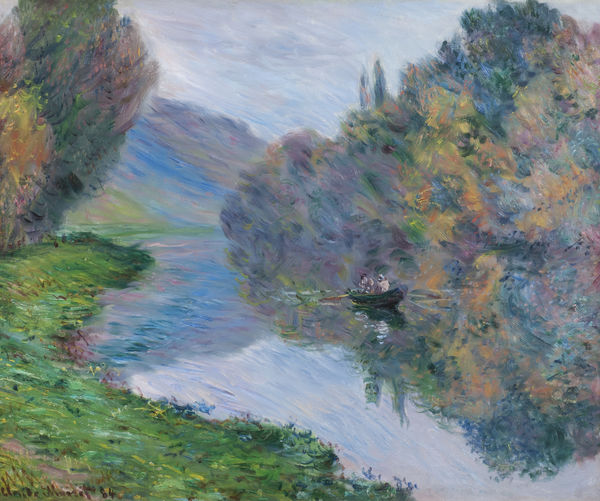Claude Monet
(French, 1840-1926)
Claude Monet is one of the most important figures in the history of art and a leading member of the Impressionist movement.
Monet was born on November 14, 1840 in Paris. In 1845 his family moved to Le Havre in Normandy, where Monet entered the Le Havre secondary school of arts. While he was reportedly a decent student, Monet did not like being confined to a classroom. He was more interested in being outside. At an early age, Monet developed a love of drawing.
In the community, Monet became well known for his caricatures, and drew many of the town's residents. In the 1850s, on the beaches of Normandy he met fellow artist Eugène Boudin who became his mentor and taught him to use oil paints and outdoor techniques for painting.
In 1859, Monet decided to move to Paris to pursue his art. He enrolled as a student at the Academie Suisse. During this time, Monet met fellow artists Camille Pissarro, Auguste Renoir, Édouard Manet and Alfred Sisley. Together they shared new approaches to art, painting the effects of light in open air with broken colour and rapid brushstrokes, in what later came to be known as Impressionism.
After the outbreak of the Franco-Prussian War in 1870, Monet took refuge in England. While there, he studied the works of John Constable and Joseph Mallord William Turner, both of whose landscapes would serve to inspire his innovations in the study of colour. In 1871 he returned to France, living in Argenteuil, a small village on the Seine near Paris, from the end of 1871 to 1878, where he painted some of his best known works.
In the early 1870s Monet painted Impression, Sunrise depicting a Le Havre landscape. It hung in the first Impressionist exhibition in 1874 and is now displayed in the Musée Marmottan-Monet, Paris. From the painting's title, art critic Louis Leroy coined the term "Impressionism", which despite its derogatory intentions, was soon appropriated by the Impressionists as a term for themselves.
In the 1880s and 1890s Monet worked on "series" paintings, in which a subject was depicted in varying light and weather conditions. His first series were of Haystacks, painted from different points of view and at different times of the day. He later produced series of paintings of Rouen Cathedral, poplars, the Houses of Parliament, mornings on the Seine, and the water-lilies on his property at Giverny.
In the early 1920s Monet developed cataracts on both his eyes. The paintings done while the cataracts affected his vision have a general reddish tone, which is characteristic of the vision of cataract victims. After several operations he even repainted some of these paintings, with bluer water lilies than before the operation.
Monet died in 1926 at the age of 86 and is buried in the Giverny church cemetery. He is remembered as the founder of French impressionist painting, and the most consistent and prolific practitioner of the movement's philosophy.

